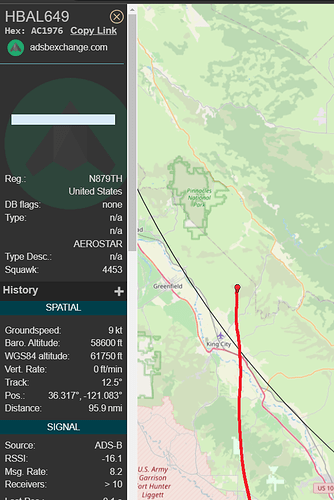I have recently been seeing HBAL balloons on the flight maps. Learning how they utilize lasers for communicating between balloons. What ensures these laser beams work efficiently? This balloon is at 61k altitude, yes but can anyone here please help me to understand why these are considered safe? What happens if one of the balloons goes rogue?
The Loon Project, developed by Alphabet’s subsidiary, Loon LLC, is designed to provide internet connectivity to remote and underserved areas using a network of high-altitude balloons. These balloons are equipped with various technologies, including lasers, to create a communication network in the stratosphere.
Here’s how the lasers in the Loon Project work:
- Balloon-to-Balloon Communication: The balloons in the Loon network communicate with each other using lasers. Each balloon is equipped with a laser communication system that allows it to send and receive data via laser beams. This communication is crucial for creating a relay system, where data can be transferred between balloons to cover a larger area. For example, if one balloon is within the range of a ground station and another balloon is out of range but within sight of the first balloon, data can be relayed between them using lasers.
- Ground-to-Balloon Communication: Ground stations on the Earth’s surface send data to the balloons in the stratosphere using focused laser beams. These lasers are pointed upwards and are precisely aimed at the balloons. The data is encoded onto the laser beams, which are then transmitted to the balloons. The balloons have special receivers that can detect and decode the laser signals, allowing them to receive information from the ground.
- Positioning and Navigation: Lasers are used for accurate positioning and navigation of the balloons. The balloons need to be precisely located in the stratosphere to ensure proper network coverage. Ground stations send laser beams to the balloons, and by measuring the time it takes for the laser beams to travel to the balloons and back, engineers can calculate the distance between the balloon and the ground station. This information, combined with GPS data, helps determine the balloon’s exact position and altitude.
- Adaptive Network Management: The Loon Project employs advanced algorithms that use data from lasers, GPS, and other sensors to dynamically adjust the positions of the balloons. Wind patterns and atmospheric conditions in the stratosphere can change, affecting the balloons’ positions. The lasers’ data helps the network management system optimize the balloon constellation to maintain optimal coverage and connectivity.
- Data Transmission Rates: Lasers enable high-speed data transmission between the balloons and the ground stations. The use of lasers allows for efficient and rapid data transfer, which is essential for providing internet access to users on the ground.
